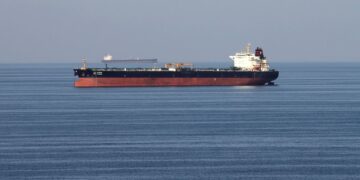As the conflict between Israel and Iran intensifies, markets fear a blockade of the Strait of Hormuz, a strategic passage for oil exports. While the Iranian regime’s limited military capabilities make a total closure unlikely, Tehran nevertheless retains a real capacity to cause disruption.
This is the main impact of the conflict between Iran and Israel on the markets: higher oil prices. Prices have risen by around 10% since hostilities broke out.
Iran currently produces 3.3 million barrels per day and exports 1.7 million. But beyond the potential impact on Iranian production itself, it is mainly exports of oil (and gas) produced in the Middle East that are at risk.
A third of oil tankers pass through the Strait of Hormuz. As for gas, Qatar, which produces 20% of the world’s LNG, exports it exclusively through this strait. Investors therefore fear that the Iranians could block this passage. This is certainly a threat that they themselves have been brandishing for a long time.
But what this latest escalation shows us is that the Iranians do not really have the means to do so. More broadly, the regime’s military capabilities are limited. Israel, for example, has total control of Iranian airspace and can carry out its bombing raids with complete freedom.
While the outright closure of the Strait of Hormuz therefore seems unlikely, the Islamic Republic nevertheless still has the capacity to cause disruption: this has been evident in recent hours.
On Tuesday, two oil tankers collided in the strait. This incident comes after numerous reports of electronic interference in the area in recent days.
This interference is GPS interference. As a result, many ships and aircraft appear to be flying erratically (turning in perfect circles, appearing on land, and overlapping massively at the same point).
According to an analysis conducted by the Financial Times over a two-hour period on Tuesday morning, more than 170 ships were affected. The jamming appears to be coming from the Iranian port of Bandar Abbas.
Maritime traffic in the area is already declining. According to maritime industry sources, some companies are even suspending their crossings.
Daily ship crossings in the Strait of Hormuz. 7-day moving average. Source: Bloomberg
In their most pessimistic scenarios, strategists fear a return of oil prices to 2008 levels: JPMorgan anticipates a price of $130 per barrel, and ING estimates that the record high of $150 could be exceeded if the disruptions continue until the end of the year.
While we are still far from these levels, rising prices are not good news for the global economy (except for countries that are highly dependent on oil revenues). Tariffs have already led to downward revisions in growth and upward revisions in inflation in major developed countries. And higher oil prices could amplify this dynamic.
















